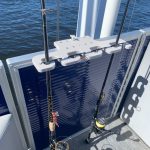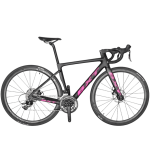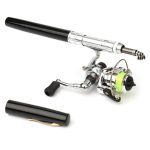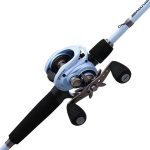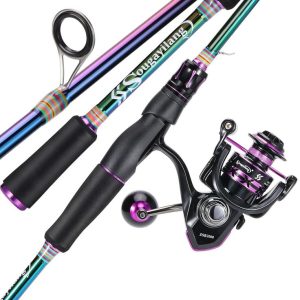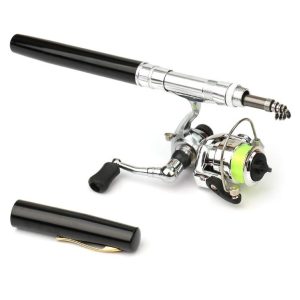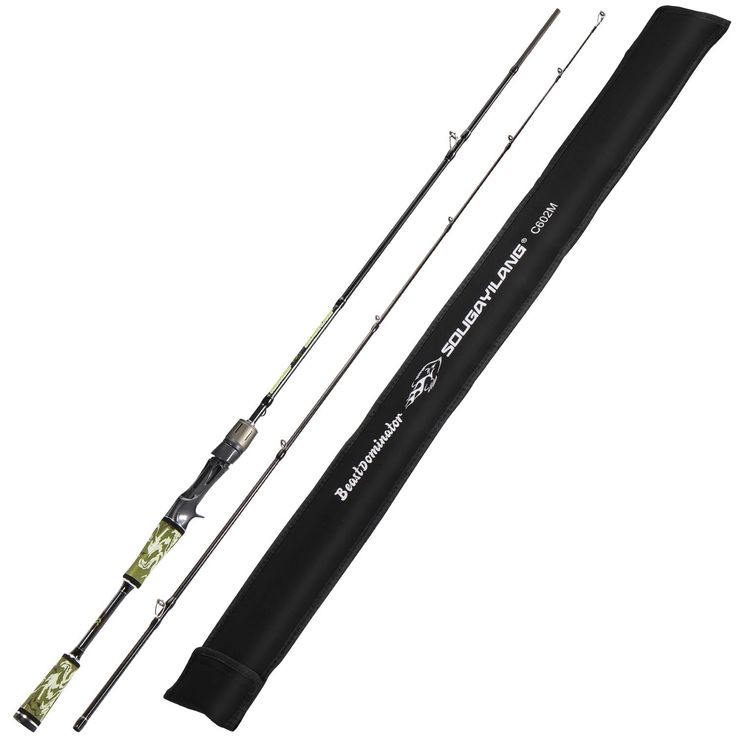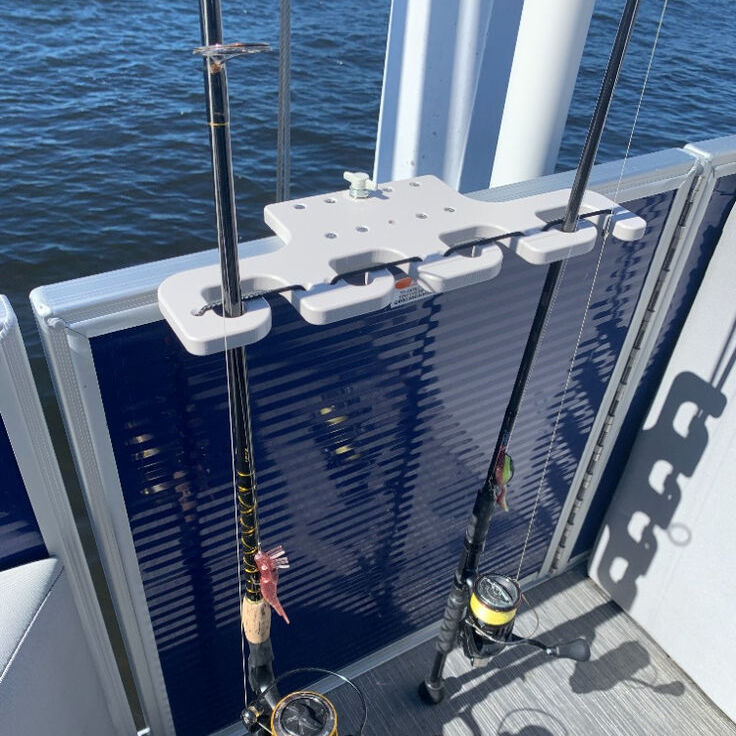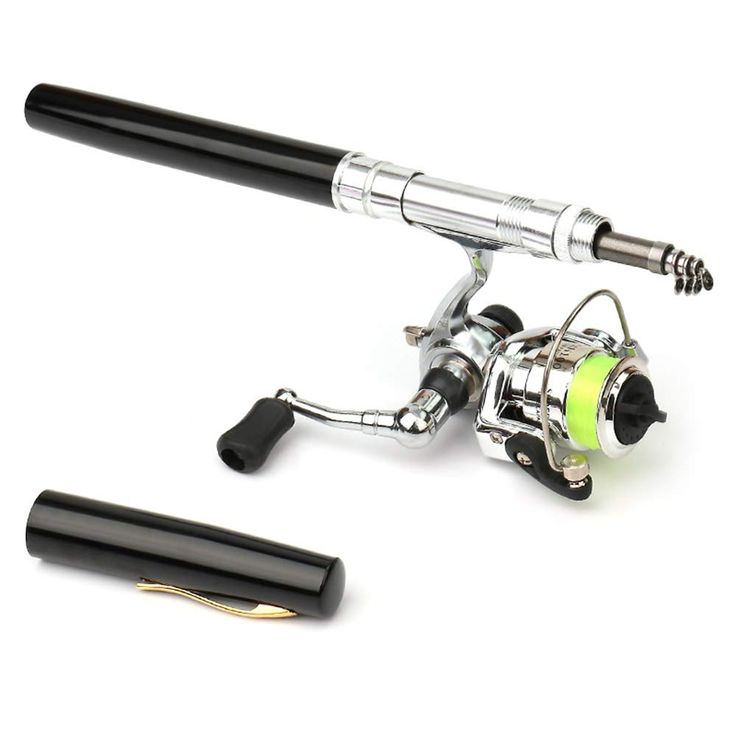Key Factors to Consider When Choosing a Spin Fishing Rod
Choosing the right spin fishing rod can be crucial for a successful fishing trip. Consider the following key factors:
- Rod Length: The length of the rod should match the type of fishing you plan to do. Shorter rods offer more control for close combat, while longer rods are great for casting farther distances.
- Rod Power: Also known as rod weight, this indicates how much a rod can bend under pressure. Power ranges from ultralight for small fish to heavy for big game fishing.
- Rod Action: This refers to where the rod flexes. Fast action rods bend near the tip, while slow action rods bend closer to the handle. Choose based on the agility and speed you need.
- Material Construction: Rods can be made from graphite, fiberglass, or composite materials. Graphite is sensitive and lightweight, fiberglass is durable and tough, and composites offer a balance of both.
- Handle and Grips: Comfort is key when holding your rod for hours. Look for rods with ergonomic handles that suit your grip style.
- Reel Seat: Ensure the reel seat is sturdy and can hold the reel firmly. A loose reel seat could mean a lost fish or damaged equipment.
By taking these factors into account, you’ll be in a strong position to select a spin fishing rod that meets your needs and enhances your fishing experience.

Exploring the Different Types of Spin Fishing Rods
When shopping for a spin fishing rod, you’ll encounter a range of types, each with unique features that cater to different fishing scenarios. Understanding the distinctions between these rods can help you make an informed decision. Here’s a breakdown of the common types of spin fishing rods you may come across:
- Spinning Rods: Ideal for beginners, spinning rods are versatile and easy to use. They accommodate lighter lures and are good for finesse fishing techniques.
- Ultralight Rods: Ultralight rods are designed for small fish species like trout and panfish. They are highly sensitive, allowing you to feel even the slightest nibble.
- Surf Rods: Longer in length, surf rods are made to cast great distances, perfect for fishing from the shore into the surf.
- Telescopic Rods: Collapsible for easy transport, telescopic rods are suitable for anglers on the go who still require a full-sized rod when fishing.
- Travel Rods: These rods break down into smaller pieces, making them convenient for anglers who travel frequently and need to pack their equipment compactly.
By identifying the type of fishing you intend to do, you can narrow down which type of spin fishing rod will best meet your needs. Whether you’re aiming for precision in a freshwater stream or seeking distance on the coastline, there’s a spin fishing rod type designed for your specific situation.
The Role of Rod Length in Spin Fishing Success
The length of your spin fishing rod significantly affects your fishing success. Different fishing environments and techniques require various rod lengths. Understanding how rod length influences control and casting distance can help you choose the right spin fishing rod.
- Control: Short rods, generally under 6 feet, offer better control and accuracy in tight spots. They are ideal for fishing in crowded streams or under overhanging trees where precision is key.
- Casting Distance: Longer rods, often over 8 feet, allow for greater casting distances. They work well in open waters like lakes and oceans where you need to cast your line far from the shore.
- Versatility: Medium-length rods, ranging from 6 to 8 feet, provide a balance of control and casting ability. They are suitable for a variety of fishing situations, making them a good choice for many anglers.
Selecting the correct rod length enhances your ability to target specific fish and adapt to different water bodies. It also improves your overall fishing experience, whether you are a novice or experienced angler.

Understanding Rod Power and Action for Targeted Species
Choosing the right rod power and action is key for fishing success. These elements determine how the rod will perform with different fish species. Here’s a simple guide to help you understand rod power and action:
- Rod Power: This is about how much pressure makes your rod bend. Rod power categories range from ultralight for smaller fish to heavy for bigger fish. A heavier power rod can handle bigger, stronger fish. Ultralight rods are best for small fish like trout.
- Rod Action: Rod action refers to where the bend occurs on the rod during casting or fighting a fish. Fast action rods bend mostly near the tip. This makes them sensitive and great for quick hook sets. Slow action rods bend more towards the base, which is good for casting with softer lures.
Selecting the appropriate power and action greatly influences your fishing effectiveness. It ensures that you can manage the fish during the fight and perform better casts. Consider what species you target most often when choosing these features.
Material Matters: The Pros and Cons of Different Rod Constructions
Material choice plays a big role in the performance of your spin fishing rod. Let’s explore the advantages and disadvantages of the most common materials used.
- Graphite Rods: Graphite is lightweight and sensitive, making it a top choice for many anglers. Its sensitivity lets you detect even subtle bites quickly. However, graphite rods can be less durable than other types and may break more easily under heavy loads or when mishandled.
- Fiberglass Rods: Fiberglass rods excel in toughness and durability. They are a great choice for anglers who value endurance over sensitivity. Fiberglass can withstand rough handling, making it suitable for beginners or for fishing in conditions where rods can take a beating. The downside to fiberglass is its heavier weight and reduced sensitivity compared to graphite.
- Composite Rods: These rods combine graphite and fiberglass, offering a balance between sensitivity and durability. Composite rods can handle a variety of fishing situations. They can be more expensive than single-material rods, but their versatility justifies the cost for many anglers.
- Bamboo Rods: Traditional and natural, bamboo rods have a classic feel and a moderate action that many anglers enjoy. They are often handmade and can be quite expensive. Bamboo is not as widely used today due to the prevalence of modern materials, but it remains a niche choice for certain styles of fishing.
Choosing the right material depends on your fishing preferences, the species you target, and your budget. Consider these pros and cons when selecting your next spin fishing rod to make sure it aligns with your fishing goals.
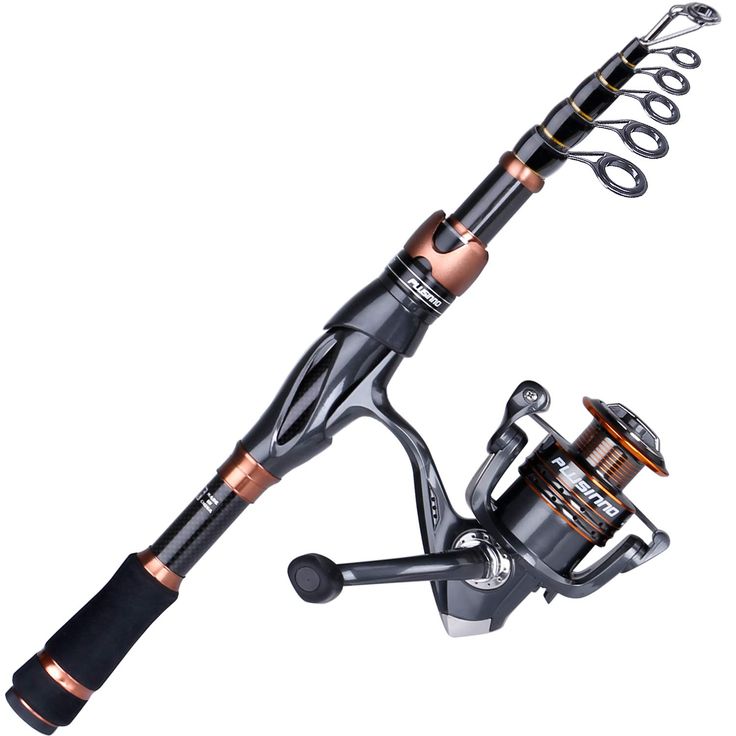
Essential Features to Look for in a Spin Fishing Rod
When shopping for a spin fishing rod, beyond the basics of length, power, action, and material, there are a few additional features to consider. Here’s what to keep in eye out for to enhance your angling experience:
- Guides: The rings along the rod, known as guides, help control the line. Look for quality guides that can endure frequent use and minimize line friction.
- Balance: A well-balanced rod feels comfortable in your hand and improves casting accuracy. Test the balance by placing the rod on your finger near the reel seat.
- Weight: Lighter rods reduce fatigue after hours of casting. However, ensure the weight is appropriate for the species you’re targeting.
- Hook Keeper: This small feature allows you to secure your lure or hook when not in use, keeping your line tangle-free.
- Warranty: A good warranty can offer peace of mind. It reflects the manufacturer’s confidence in their product’s durability.
By considering these essential features, you can choose a spin fishing rod that not only meets your fishing needs but also offers convenience and reliability on the water.


